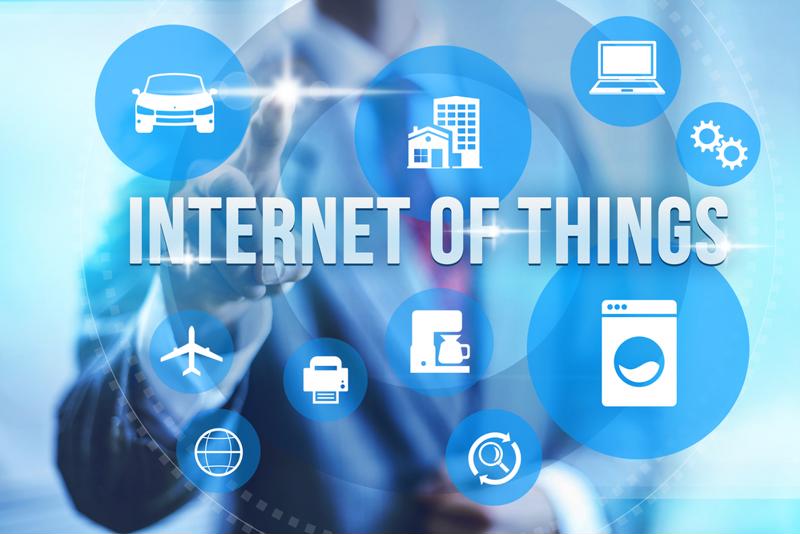
How specific use cases drive IoT spending
By Max BurkhalterApril 23, 2019
Over the past decade, the internet of things has become a dominating force in the technology sector, with an estimated 29 billion connected devices set to be in use around the world by 2022, according to Ericsson's most recent internet of things forecast. Of these devices, 18 billion will be directly related to IoT applications, including self-driving cars, smart meters, wearables and other consumer electronics.
However, a 2018 study by Bain and Company found that the primary drivers of the IoT market have been enterprise and industrial customers, who seek to capitalize on the productivity gains and data-driven insights offered by embedded technologies. Bain expects the combined markets of IoT hardware, software, systems integration and data services will expand to $520 billion in 2021, despite the technology's security flaws and uncertain returns on investment. This optimism is partly the result of an increase in proof-of-concept deployments and the prevalence of new use cases, which have attracted the attention of some of the more cautious industrial players.

IoT use case trends
Although many barriers to IoT adoption have been lowered thanks to reduced device costs and simplified implementation models, some industries remain skeptical about the technology's long-term relevance. According to Boston Consulting Group, most customers see significant value in IoT services, analytics and applications that allow companies to integrate and customize data, but are less confident about existing identity and security features. This apprehension has led many industries to take a slow-roll approach to IoT implementation, forcing tech companies to narrow the scope of their product offerings to better align with specific operational needs. BCG's 2017 trend analysis identified ten IoT use cases that will likely experience widespread adoption and rapid growth through 2020, including:
- Predictive maintenance: Advances in embedded IoT sensors have allowed companies to address machine and equipment vulnerabilities with impressive precision, helping reduce unplanned downtime and extend maintenance cycles. This is valuable for a host of industries, from discrete manufacturing to transportation and logistics.
- Self-optimizing production: Connected environments use IoT equipment to monitor production workflows in real time, which can generate actionable insights into how companies can optimize critical operations, improve productivity and reduce waste. These capabilities are essential to process industries and discrete manufacturing plants.
- Automated inventory management: The ability to track inventory location and status is beneficial to nearly every industry, as it provides greater supply-chain visibility and operational oversight. IoT sensors can monitor products through every stage of their lifecycle, from the shop floor to the shipping bay.
- Remote patient monitoring: Health care facilities use IoT to track patient data and monitor their condition in real time, improving health outcomes and reducing emergency medical costs. This allows physicians and caregivers to observe their patients' remotely and prioritize emergency situations.
- Smart meters: Utility companies have already begun installing IoT-enabled meters in residential areas to track usage and streamline maintenance requests. Consumers also benefit from these technologies, as they provide instant billing data upon request and enable dynamic pricing for their electricity, gas and water consumption.
- Track and trace: Consumers have come to expect real-time tracking features that provide accurate delivery estimates for their digitally purchased goods. Package couriers use IoT sensors to reduce workstation transition times and enhance transparency for all the orders they fulfill, from warehouse to doorstep.
- Distributed generation and storage: Large facilities can leverage IoT technologies to automate their distributed energy generation and storage across multiple sources. This allows companies to maintain essential energy consumption and identify opportunities to reduce their overhead costs.
- Connected cars: While self-driving cars are not yet commercially viable, consumer vehicles already possess a variety of IoT capabilities, such as enhanced navigation, electronic safety features and automated maintenance alerts. Wireless connectivity is also valuable for emergency response and taxi services.
- Fleet management: Shipping companies rely on IoT sensors to relay fleet location and usage data to centralized management hubs. This equipment allows fleet managers to improve route efficiency, reduce maintenance costs and identify roadway hazards in real time.
- Demand response: Demand-response programs have transformed the relationship between end users and utility companies. These IoT systems authorize utility companies to take control of certain energy-intensive appliances to better manage supply and demand volatility during periods of peak usage.
IoT investments depend on reliable network infrastructures
Along with specific use cases, BCG's study identified three industries that will likely experience the highest rate of IoT spending over the next few years: discrete manufacturing, transportation and logistics, and utilities. Investments from these industrial players could account for close to 50% of all IoT spending in the B2B space, though future deployments will require significant infrastructure expansion to maintain consistent scalability. Industrial-grade connectivity equipment is crucial to the long-term success of any IoT deployment, especially in environments that utilize disparate monitoring technologies.
Perle offers high-performance networking components that can support IoT innovation in small- and large-scale applications. Read some of our customer stories to learn how we've helped companies prepare for the future.



